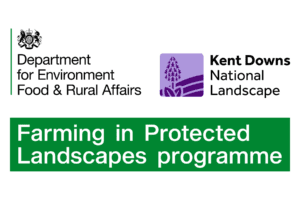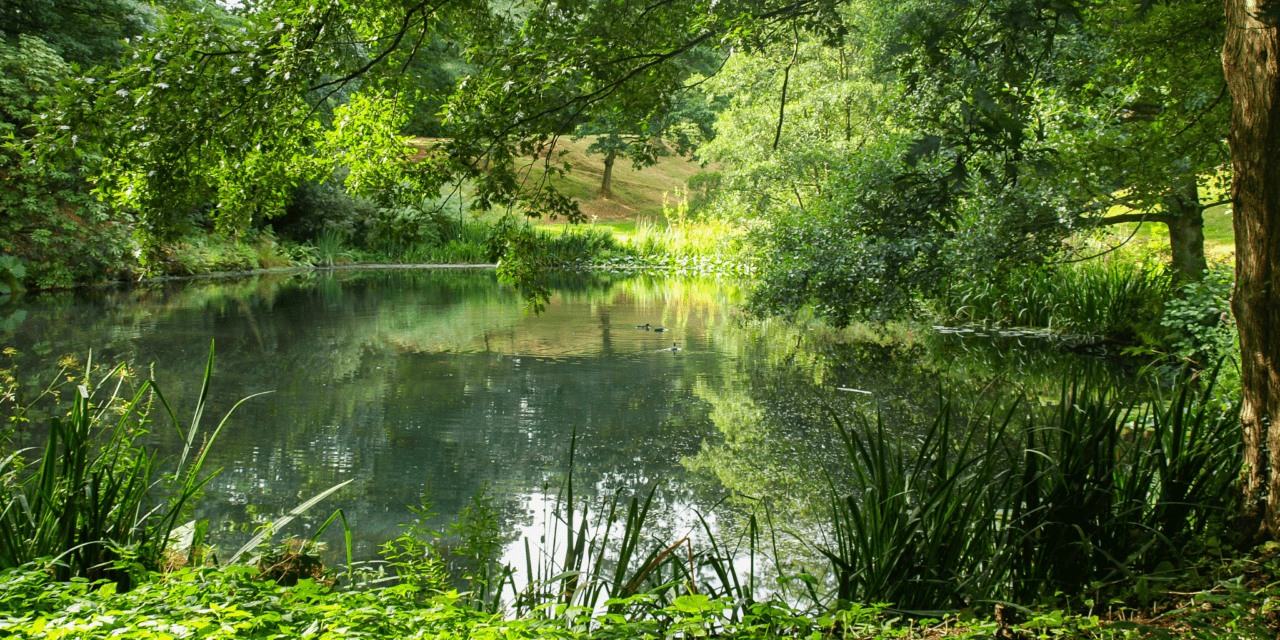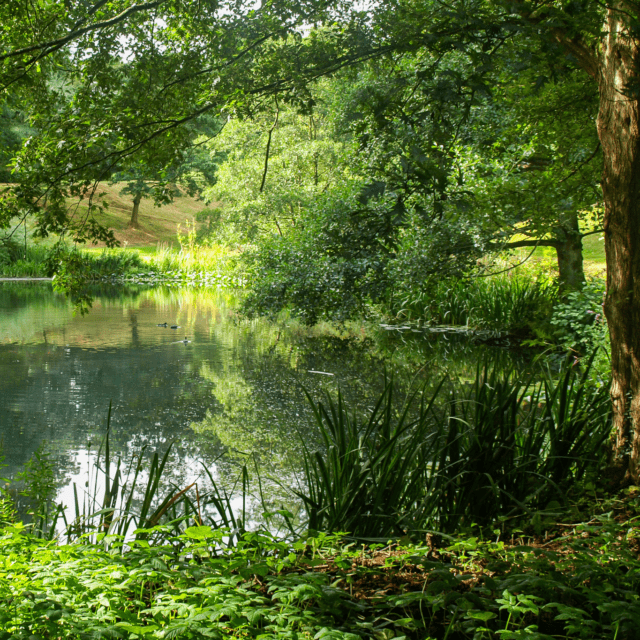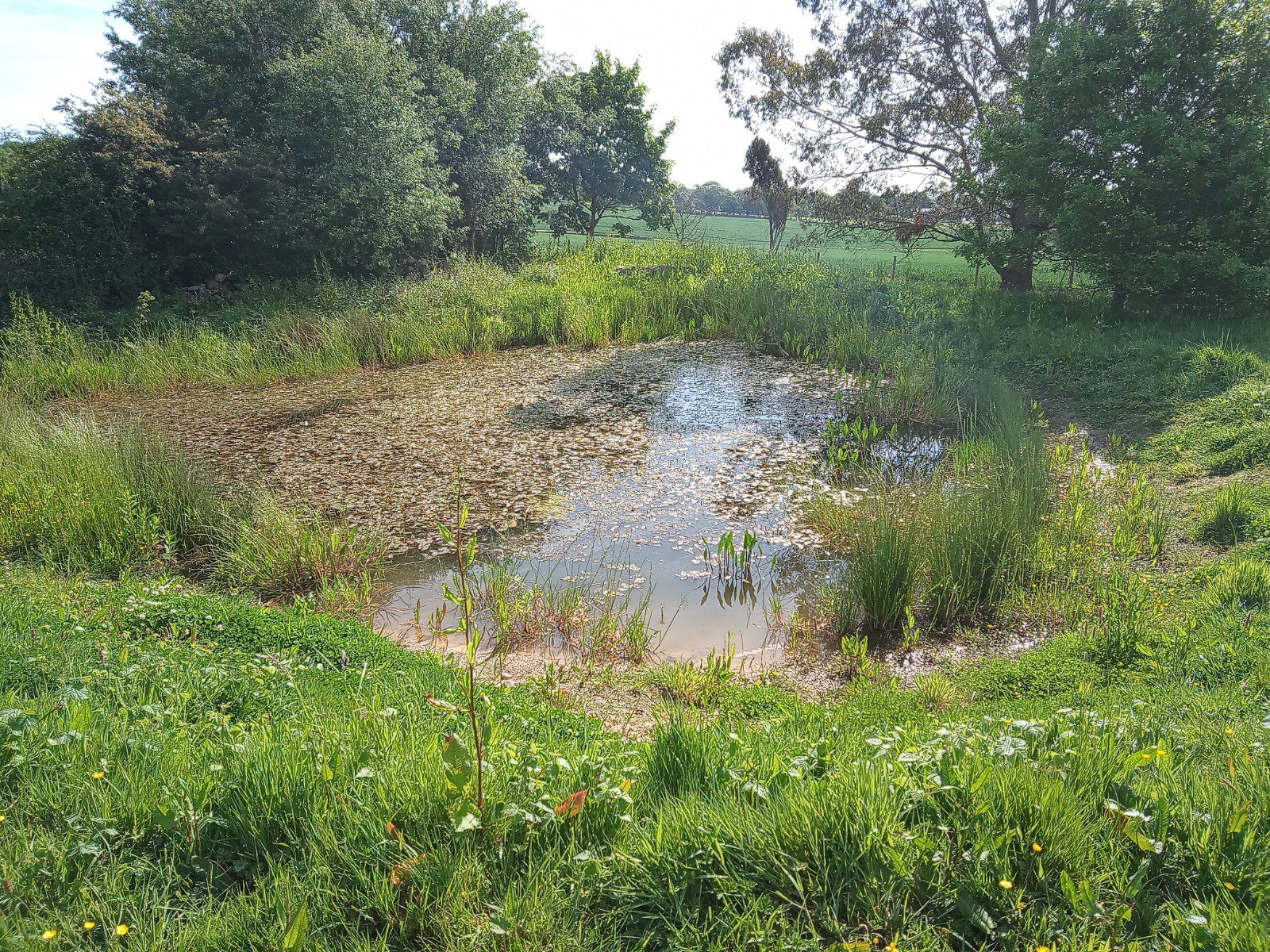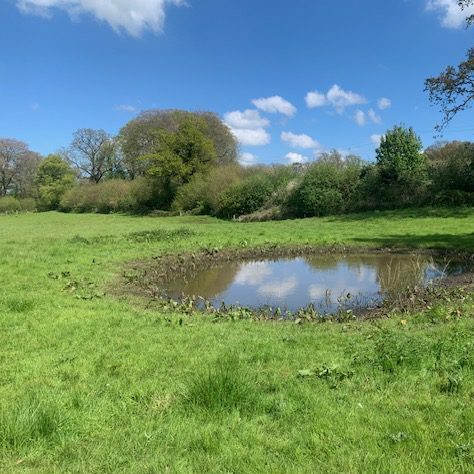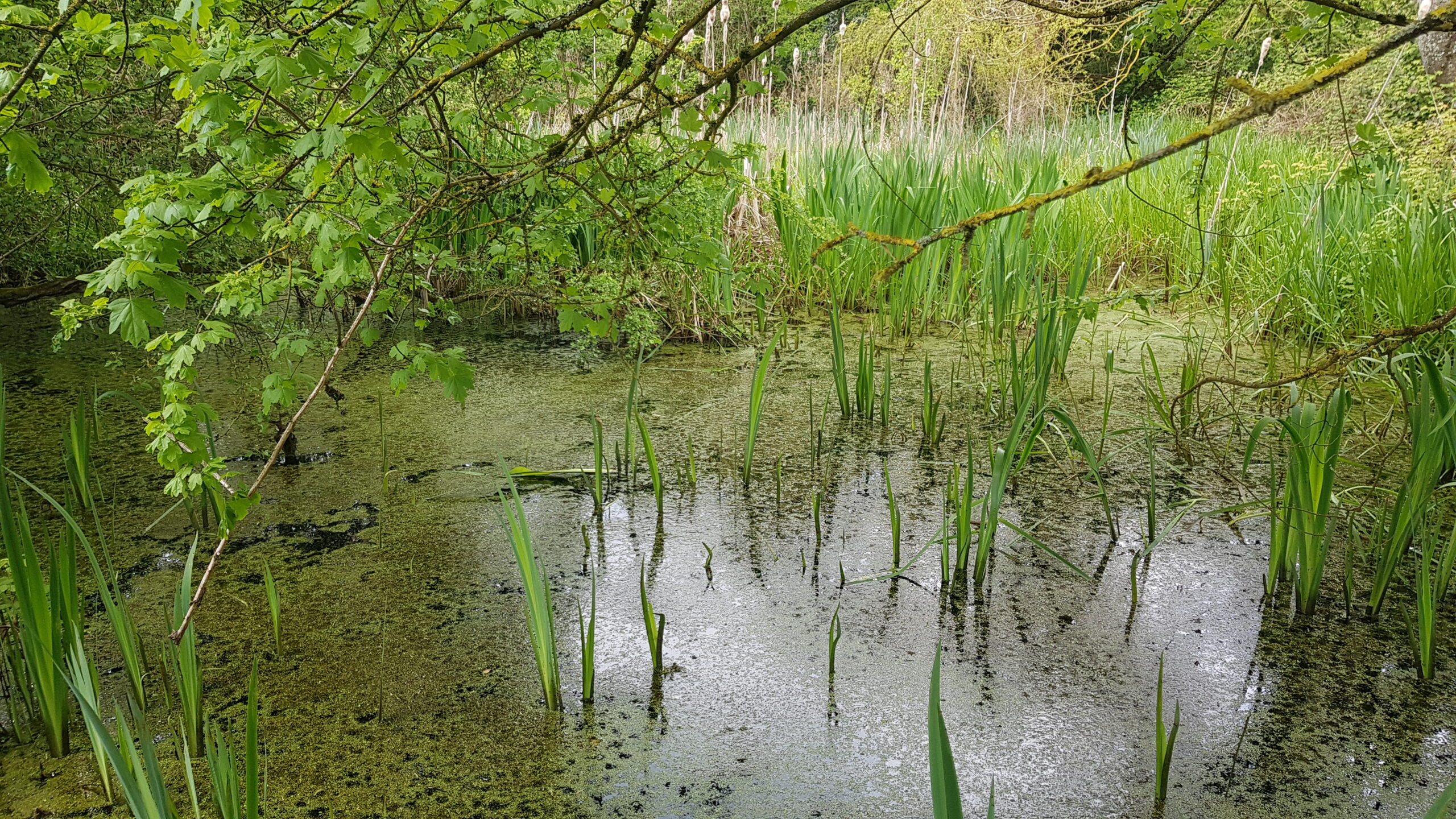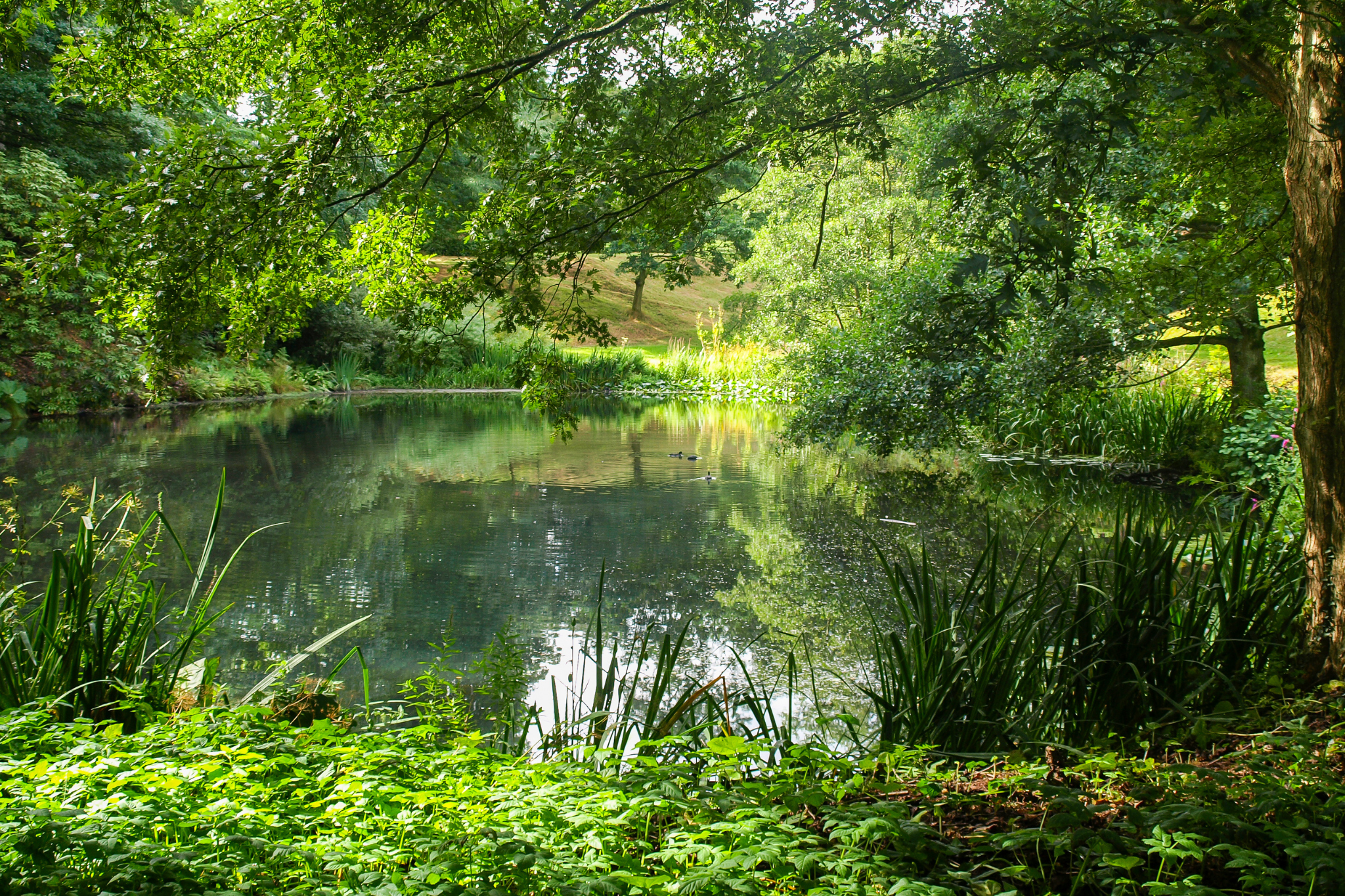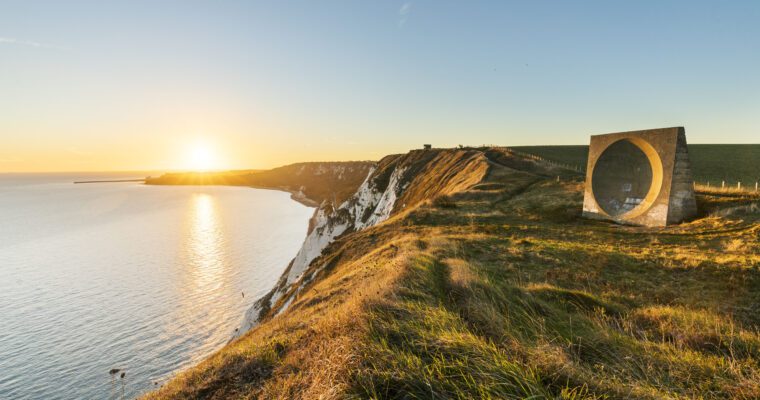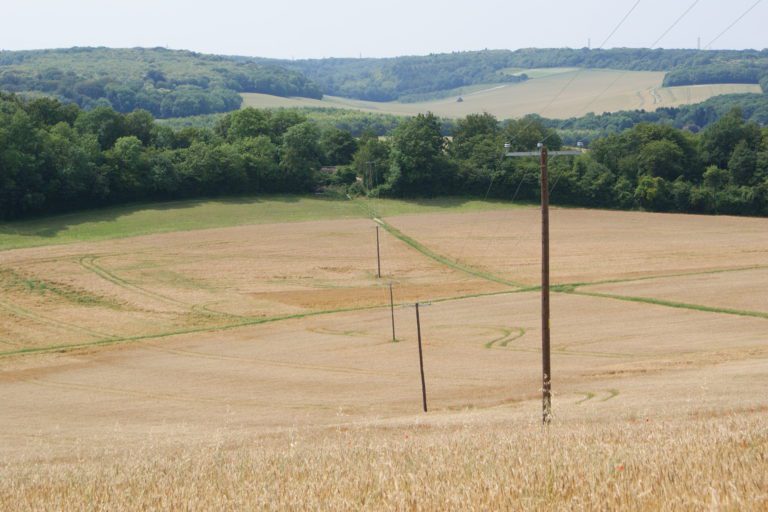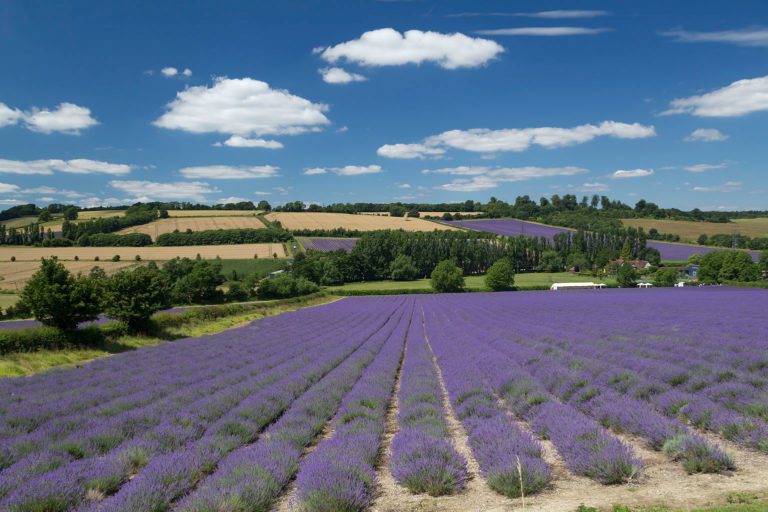This ambitious project has mapped over 1400 historic ponds in the Kent Downs National Landscape. The recorded information will help us to understand more about these ponds, and to help us to plan their restoration for wildlife.
About the project
In 2024 and early 2025 the Kent Downs Heritage Ponds project has worked with 55 volunteers from across the many parishes of the Kent Downs to map historic ponds, such as dew ponds and ‘soles’ – that were once common in the landscape. We’ve also worked with the Kent Countryside Management Partnerships and many landowners to check out the current condition of these ponds on the ground.
By February, we had already mapped over 1400 ponds – and there are still more to be recorded. Many farmsteads had around 6 to 8 ponds even just in the area close to the farmyard! This water no doubt had many practical uses day to day, from washing horses and carts, to providing water for domestic tasks and for farm animals.
The next stages of the project will also be very exciting as we look forward to finding out more about the archaeological interest that may lie in our ponds – some of which may be very ancient indeed. This will help us to see which of our ponds are suitable for restoration and how this should be approached.
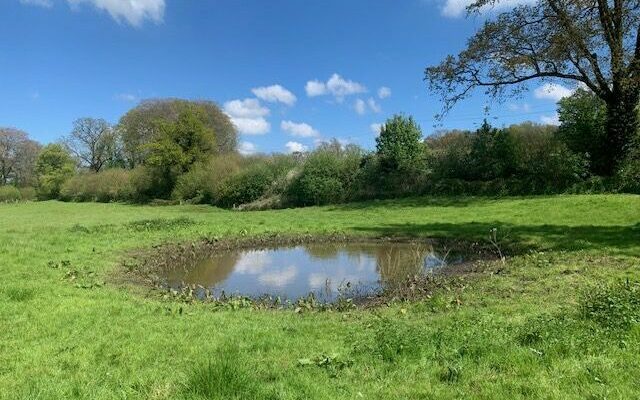
What is a dew pond or sole?
A dew pond is a type of small pond that was created on top of chalky hills such as the Kent Downs in the 18th and 19th centuries. They offer a glimpse into past farming practises. These ponds were man-made to provide water for livestock that grazed on those hills.
A sole is similar to a dew pond, but instead of being dug on chalky ground, soles were dug on areas with clay soil or other soil types that can hold water better than chalk. This allowed soles to contain water for more of the year compared to dew ponds on chalk.
While some of these ponds on farmland still exist today, many have been lost over the decades. However, there is little existing data on the total number of dew ponds and soles in the National Landscape. This mapping exercise will help us to gauge just how many may have been lost and then create an inventory of the number of ponds that remain. This will be carried out using the Kent LiDAR Portal combining old and new Ordnance Survey maps.
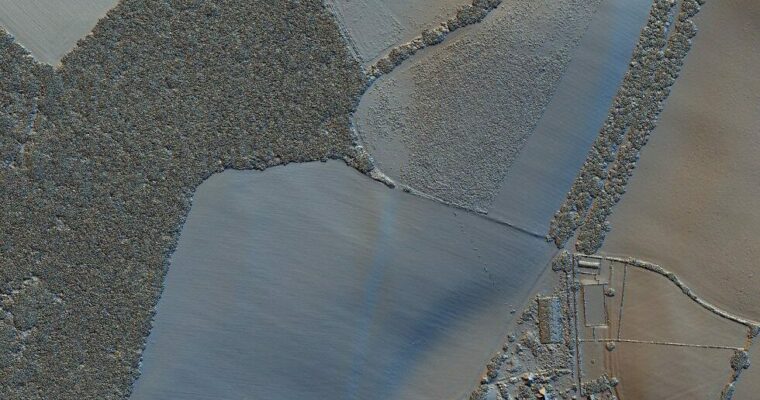
What is LiDAR?
Light Detection and Ranging (LiDAR) is a method of collecting geographical point data by flying over the landscape and using laser to measure height and distance. The resulting 3-dimensional map is a precise representation of the shape of the landscape and its surface characteristics. By exploring the 3D Lidar mapping, we will be able to identify man-made structures, see the full breadth of vegetation cover, and understand the shape of the landscape as a whole. We’re using LiDAR as it let’s us compare old maps of the Kent Downs with current OS maps. We’ll digitally remove surface data to reveal long-forgotten heritage sites, such as ponds.
The next stage of the project will be to ‘ground truth’ a selection of the ponds identified. This will see us and partners, including the Kent Countryside Management Partnerships and Kent Farming and Wildlife Advisory Group, head out into the landscape to check the accuracy of the data we’ve mapped. We’ll work with local landowners to qualify the mapped data and assess which ponds have the potential for restoration.
The target areas will be:
- areas of priority for key wildlife species, such as turtle doves.
- areas where ponds in the landscape are currently sparse and the addition of new features would benefit all wildlife.
We hope to uncover a lot of exciting local heritage stories and aim to have at least 10 ponds for restoration.
The history of ponds in the Kent Downs

Nationally, around 75% of ponds have been lost in the last 100 years due to the huge increase in mechanised arable agriculture and due to other modern means of providing water for livestock.
Ponds of the Kent Downs may have been naturally occurring, part of village infrastructure (eg mill ponds), been formed after diggings for minerals, or dug on farmland for the purposes of watering livestock. As chalk is particularly free-draining, the need to conserve water for this purpose would have been considerable.
Some of these ponds have now been absent from the landscape for many decades, meaning it’s likely there will be less biodiversity in these areas. The need for a seasonal or permanent water source is exacerbated by threats from climate change and periods of drought, not only to water-dependent species, but to all wildlife which need water to survive.
The importance of conserving ponds
While all ponds are important for wildlife, there are particular benefits seen from different types of pond. Those holding water only seasonally (dew ponds) are ideal for species such as water beetles, dragonfly nymphs and certain wetland plants, whereas ponds that hold water all year (sole ponds) are better for amphibians. When newt larvae are developing, they have gills and need water to breathe. Protected species such as the Great Crested Newt are apparent in parts of Kent but they prefer larger, deeper farmland or edge of woodland ponds and many no longer exist (known as ‘ghost’ ponds) or are in poor condition. This project could help them. Red-list Turtle Doves could also benefit from restored water sources in key Turtle Dove Zones within the Kent Downs.
Strengthening the network of clean water bodies and creating ‘stepping stones’ throughout the Kent Downs National Landscape is a biodiversity priority and this exciting project will make a big difference. Strengthening the network of open water in the National Landscape is a biodiversity priority. There is great biodiversity value in restoring sites where ponds once existed. Restoring these ‘ghost’ ponds will enable many lost wetland species to establish once more.
You’re invited to dive deep into the murky waters of the past!
Are you fascinated by local stories and old maps? We’re looking for volunteers to help us map the heritage ponds of the Kent Downs National Landscape.
No experience necessary!
Please note, this is currently an online mapping project and we aren’t encouraging volunteers to go out looking for ponds at this stage. We’ll be undertaking careful ground-truthing of mapped pond data under supervision of the Kent Countryside Management Partnerships later in the project.
The Kent Downs Heritage Ponds project is funded through Defra’s Farming In Protected Landscapes programme and The National Lottery Heritage Fund. Thank you to National Lottery players for making this project possible. The Farming in Protected Landscapes fund helps farmers, land managers and others to deliver projects in the farmed landscape under the themes of climate, nature, people and place.

